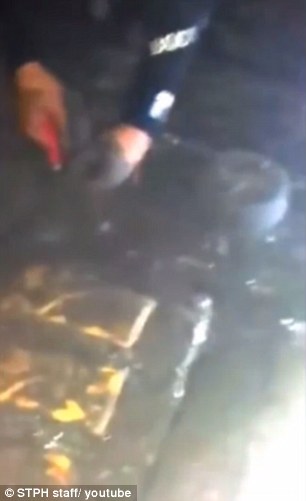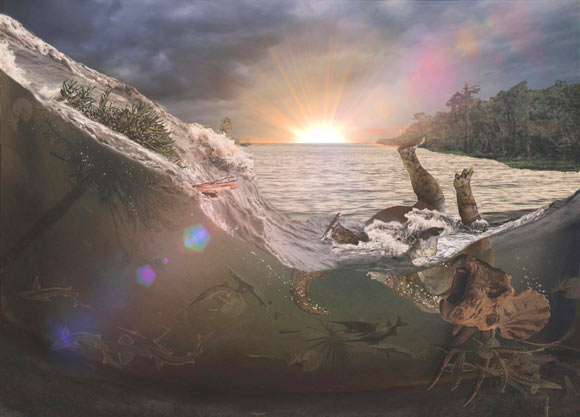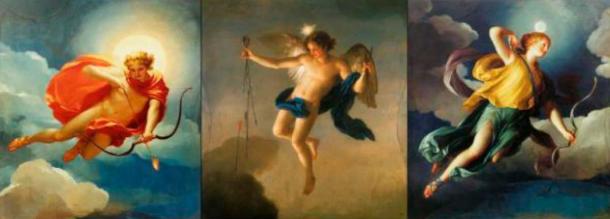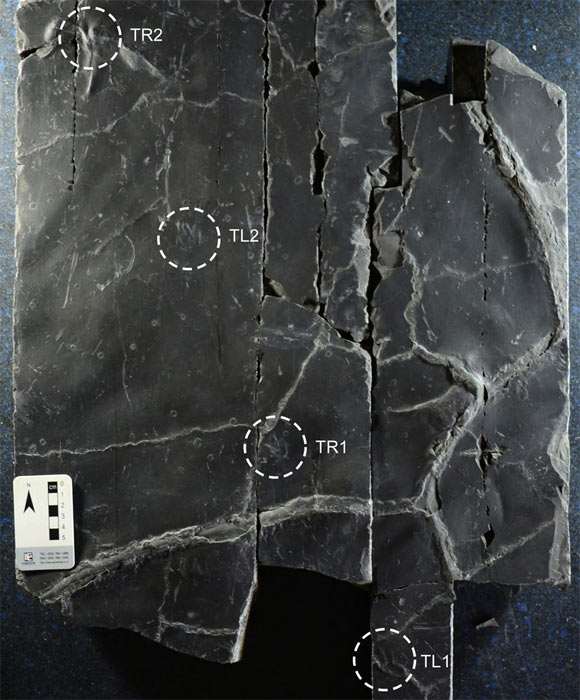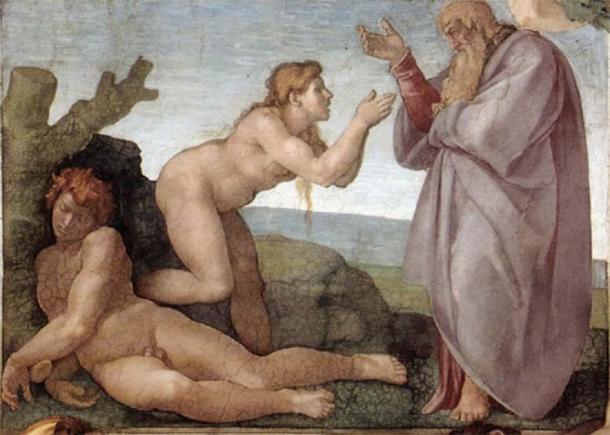Majungasaurus, a carnivorous dinosaur that lived approximately 70 million years ago (Cretaceous period) in what is now Madagascar, grew new teeth roughly 2 to 13 times faster than those of other predatory dinosaurs, according to new research.
Two individuals of Majungasaurus chasing Rapetosaurus, with Masiakasaurus in the foreground. Image credit: ABelov2014, abelov2014.deviantart.com / CC BY-SA 3.0.
“I’m hoping this project spurs more people to study other species. I bet that will reveal further surprises,” said lead author Dr. Michael D’Emic, a researcher at Adelphi University and Stony Brook University.
“And hopefully that will lead to a better understanding of how dinosaurs evolved to be successful for so long.”
In the study, Dr. D’Emic and colleagues estimated tooth formation and replacement rates in three carnivorous dinosaurs: Majungasaurus, Allosaurus, and Ceratosaurus.
The researchers used a collection of isolated fossil teeth to examine microscopic growth lines in the teeth.
These growth lines are similar to tree rings, but instead of being deposited once a year, they are deposited daily.
At the same, they used computerized tomography (CT) on intact jaws to visualize unerupted teeth growing deep inside the bones.
They found high tooth replacement rates in all three dinosaurs, with Allosaurus and Ceratosaurus rates of around 100 days and 56 days for Majungasaurus.
Craniofacial and dental histology of the predatory dinosaurs included in the study: (a) Allosaurus, (b) Ceratosaurus, and (c) Majungasaurus surface reconstructions derived from computed tomography data and dentine histology. Histological sections derived from (d) Majungasaurus, (e) Ceratosaurus, and (f) Allosaurus, illustrating incremental daily lines in dentine, which extend obliquely from upper left to lower right in each image. Scale bars – 10 cm (a-c) and 100 μm (d-f). Image credit: D’Emic et al, doi: 10.1371/journal.pone.0224734.
“Majungasaurus would form a new tooth in each socket approximately every two months,” Dr. D’Emic said.
“This meant they were wearing down on their teeth quickly, possibly because they were gnawing on bones.”
“There is independent evidence for this in the form of scratches and gouges that match the spacing and size of their teeth on a variety of bones — bones from animals that would have been their prey.”
“Some animals today, too, will gnaw on bones, including rodents. It’s a way for them to ingest certain nutrients,” Dr. D’Emic noted.
“It also requires exceptionally strong teeth — but Majungasaurus did not have those.”
“That’s our working hypothesis for why they had such elevated rates of replacement,” he added.
“The rapid-fire tooth growth puts Majungasaurus in same league with sharks and big, herbivorous dinosaurs.”
Source: sci.news







